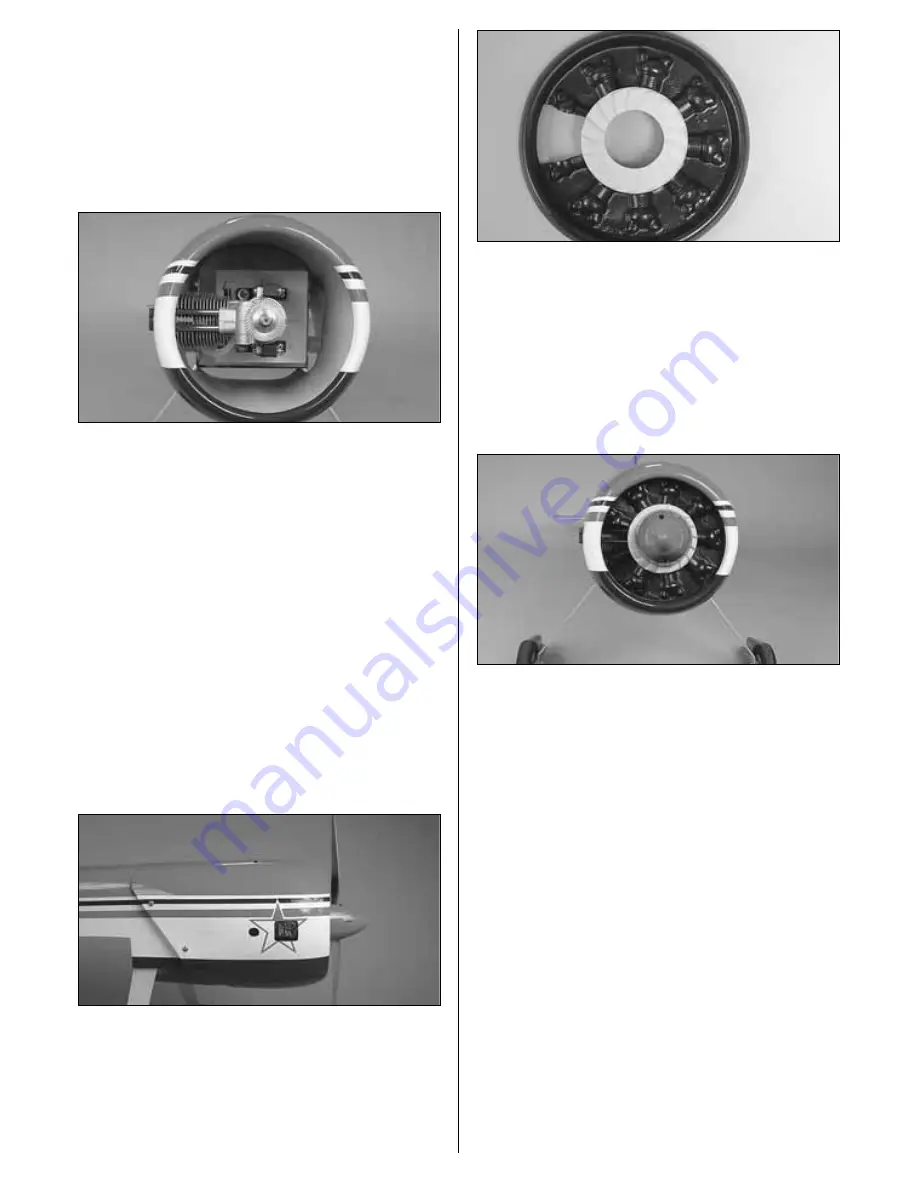
the firewall to the front of the cowl is 5-3/8”
[136mm]. This dimension will properly space the
engine when using the spinner included with this kit.
If you are using a different spinner or no spinner you
may need to position the cowl further forward or
back to properly position the cowl. Place your
spinner and propeller on the engine to be sure you
have the proper spacing required.
❏
4. Double-check to be sure you have the proper
spacing for the cowl and that the cowl is centered on
the engine. Have your assistant hold the cowl while
you mark the location for the cowl mounting screws.
(The cowl mounting blocks are easily visible from
the back of the cowl.)
Begin on the right side of the fuselage first. Drill a 3/32”
[2.4mm] hole through the cowl and into the top cowl
mounting block. Install a 3mm cowl mounting screw
into the cowl. Double check the positioning of the
cowl and then drill the bottom hole. Repeat this for the
left side of the fuselage, checking the position of the
cowl after each screw is installed.
❏
5. Remove the cowl mounting screws and the cowl.
Put a couple of drops of thin CA into each of the screw
holes to harden the threads. Allow the glue to cure.
❏
6. Re-install the cowl onto the front of the
fuselage. On the cowl, mark the location for the
glow plug, needle valve, muffler or any part of the
engine that conflicts with the cowl. Using a rotary
tool, begin cutting small portions of the cowl,
making the holes progressively larger until the cut-
out matches your particular engine installation.
❏
7. Cut the center of the plastic
dummy engine
to
fit around the front of the engine. Leave plenty of
clearance between the dummy engine and the
engine thrust washer. The spinner will cover any gaps
between the two. Mark the location of the engine
cylinder and then cut away this area from the
dummy engine. Paint the dummy engine with a fuel
proof paint. We painted the louvers a light gray and
the engine flat black.
❏
8. Slip the dummy engine into the cowl and then
install the cowl onto the fuselage. Position the
dummy engine, centering it with the engine. Using
medium CA glue with a micro-tip on the bottle, tack
glue the dummy engine to the cowl. Once the
dummy engine is secure to the cowl, remove the
cowl and permanently glue the dummy engine in
place by applying a bead of glue to the back of the
dummy engine from inside the cowl.
16























